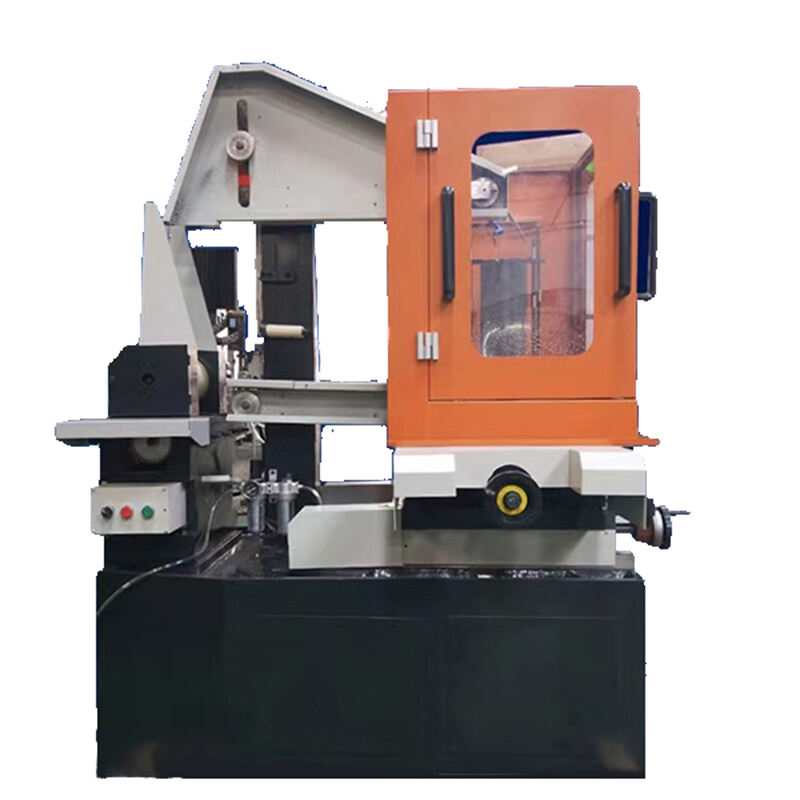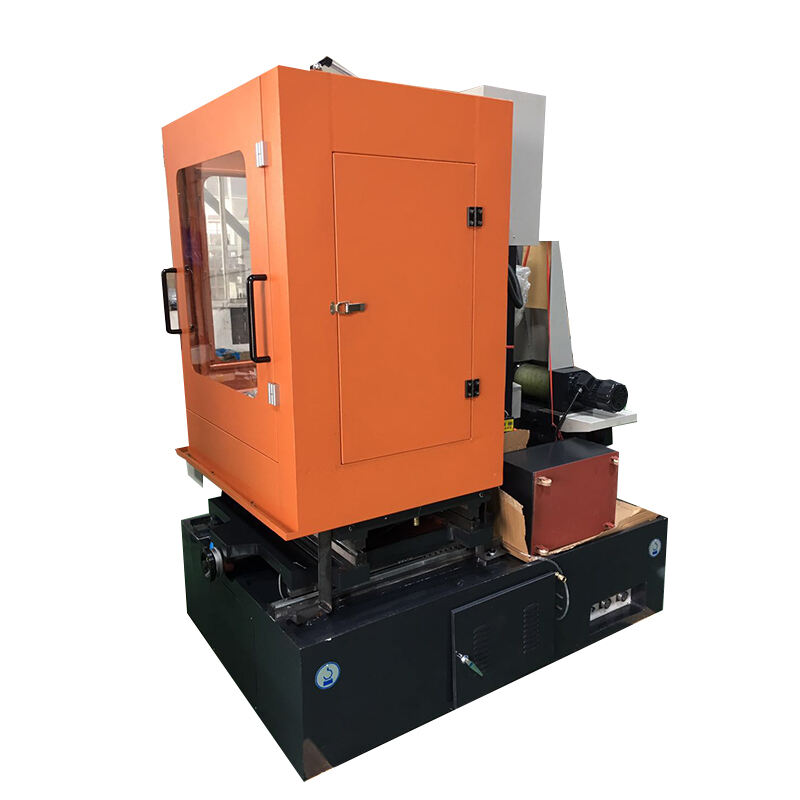Revolutionizing Industrial Efficiency with Advanced Cutting Solutions
The construction and manufacturing industries have witnessed remarkable transformations through technological advancements, with diamond cutting equipment standing at the forefront of this evolution. These sophisticated tools have become indispensable assets in modern industrial operations, dramatically enhancing productivity while delivering unprecedented precision in cutting applications. From construction sites to manufacturing facilities, the impact of diamond cutting equipment on operational efficiency continues to reshape industry standards and expectations.
Understanding Diamond Cutting Technology
Core Components and Mechanisms
Diamond cutting equipment utilizes industrial-grade diamonds embedded in specialized matrices to create cutting surfaces of exceptional hardness and durability. The diamond particles serve as microscopic cutting edges, efficiently slicing through various materials while maintaining their structural integrity. The equipment's design typically incorporates advanced cooling systems, precision control mechanisms, and robust motor assemblies to ensure optimal performance under demanding conditions.
Modern diamond cutting equipment features sophisticated electronic controls that enable operators to fine-tune cutting parameters with remarkable precision. These systems monitor factors such as cutting speed, depth, and pressure in real-time, allowing for automatic adjustments that maintain consistent cutting quality while maximizing tool life and operational efficiency.
Advanced Features and Innovations
Recent technological developments have introduced smart features in diamond cutting equipment, including IoT connectivity and data analytics capabilities. These innovations enable real-time performance monitoring, predictive maintenance scheduling, and automated optimization of cutting parameters based on material properties and environmental conditions.
Manufacturers continue to develop new diamond composition techniques and bonding technologies that extend tool life while improving cutting efficiency. These advancements result in reduced downtime for tool changes and maintenance, directly contributing to enhanced productivity in industrial operations.
Productivity Enhancement Factors
Speed and Precision Benefits
The superior cutting speed achieved by diamond cutting equipment translates directly into increased productivity. These tools can process materials significantly faster than conventional cutting methods while maintaining exceptional accuracy and surface finish quality. The combination of speed and precision reduces the need for secondary finishing operations, streamlining production processes and reducing labor costs.
Advanced diamond cutting equipment can maintain consistent cutting performance over extended periods, ensuring uniform quality across large production runs. This reliability eliminates variations in output quality that often plague traditional cutting methods, reducing waste and rework requirements.
Material Versatility and Adaptability
Modern diamond cutting equipment demonstrates remarkable versatility in handling diverse materials, from natural stone and concrete to advanced composites and ceramics. This adaptability allows facilities to consolidate multiple cutting operations onto a single platform, optimizing space utilization and reducing equipment investment costs.
The ability to quickly switch between different materials and cutting specifications enables manufacturers to respond efficiently to changing production requirements. This flexibility supports lean manufacturing principles and helps organizations maintain competitive advantages in dynamic market conditions.

Operational Cost Benefits
Long-term Investment Returns
While the initial investment in diamond cutting equipment may be higher than traditional cutting tools, the long-term financial benefits often justify the expense. The extended service life of diamond cutting components, combined with their superior performance characteristics, results in lower per-unit production costs over time.
Organizations implementing diamond cutting equipment typically observe significant reductions in ongoing operational expenses, including decreased maintenance requirements, lower energy consumption, and reduced material waste. These savings contribute substantially to improved profitability and return on investment.
Resource Optimization
Diamond cutting equipment enables more efficient use of raw materials through precise cutting capabilities and reduced kerf width. This optimization results in better material yield and less waste generation, supporting both economic and environmental sustainability goals.
The equipment's ability to maintain consistent cutting quality reduces the need for skilled operator intervention, allowing organizations to optimize their workforce allocation and focus human resources on higher-value activities. This reallocation of human capital further enhances overall operational productivity.
Implementation Strategies
Integration Planning
Successful implementation of diamond cutting equipment requires careful planning and consideration of existing production workflows. Organizations must evaluate their current processes, identify potential bottlenecks, and develop comprehensive integration strategies that maximize the equipment's productivity benefits.
Effective implementation plans include detailed operator training programs, maintenance schedules, and performance monitoring protocols. These elements ensure smooth adoption of the new technology while minimizing disruption to ongoing operations.
Optimization Techniques
To maximize productivity gains, organizations should establish systematic approaches to optimizing diamond cutting equipment operation. This includes regular analysis of cutting parameters, material flow patterns, and equipment utilization rates to identify opportunities for improvement.
Continuous monitoring and adjustment of operational parameters help maintain peak performance levels and extend equipment life. Organizations should also implement regular maintenance protocols and performance tracking systems to ensure sustained productivity improvements.
Future Trends and Developments
Emerging Technologies
The future of diamond cutting equipment looks promising with ongoing developments in areas such as artificial intelligence-driven control systems, advanced sensor technologies, and improved diamond synthesis methods. These innovations promise to further enhance productivity and operational efficiency.
Research into new diamond coating technologies and composite materials continues to push the boundaries of cutting performance and tool longevity. These developments suggest that the productivity benefits of diamond cutting equipment will continue to expand in coming years.
Industry Applications
New applications for diamond cutting equipment continue to emerge across various industries, from aerospace manufacturing to renewable energy production. The expansion of these applications drives ongoing innovation in equipment design and capabilities.
The growing emphasis on sustainable manufacturing practices aligns well with the efficiency advantages of diamond cutting equipment, suggesting increased adoption across industries focused on reducing environmental impact while maintaining high productivity levels.
Frequently Asked Questions
What maintenance requirements does diamond cutting equipment have?
Diamond cutting equipment requires regular inspection of cutting surfaces, cleaning of cooling systems, and calibration of control mechanisms. While maintenance needs are generally lower than traditional cutting tools, establishing a preventive maintenance schedule is essential for optimal performance and longevity.
How long does diamond cutting equipment typically last?
The lifespan of diamond cutting equipment varies depending on usage patterns and maintenance practices, but properly maintained systems often remain productive for several years. The diamond cutting elements themselves may need replacement periodically, though their durability typically exceeds that of conventional cutting tools by a significant margin.
Can diamond cutting equipment be upgraded over time?
Many modern diamond cutting systems are designed with modularity in mind, allowing for component upgrades and technology updates. This adaptability enables organizations to maintain competitive capabilities without complete system replacement, protecting their initial investment while benefiting from new developments.




